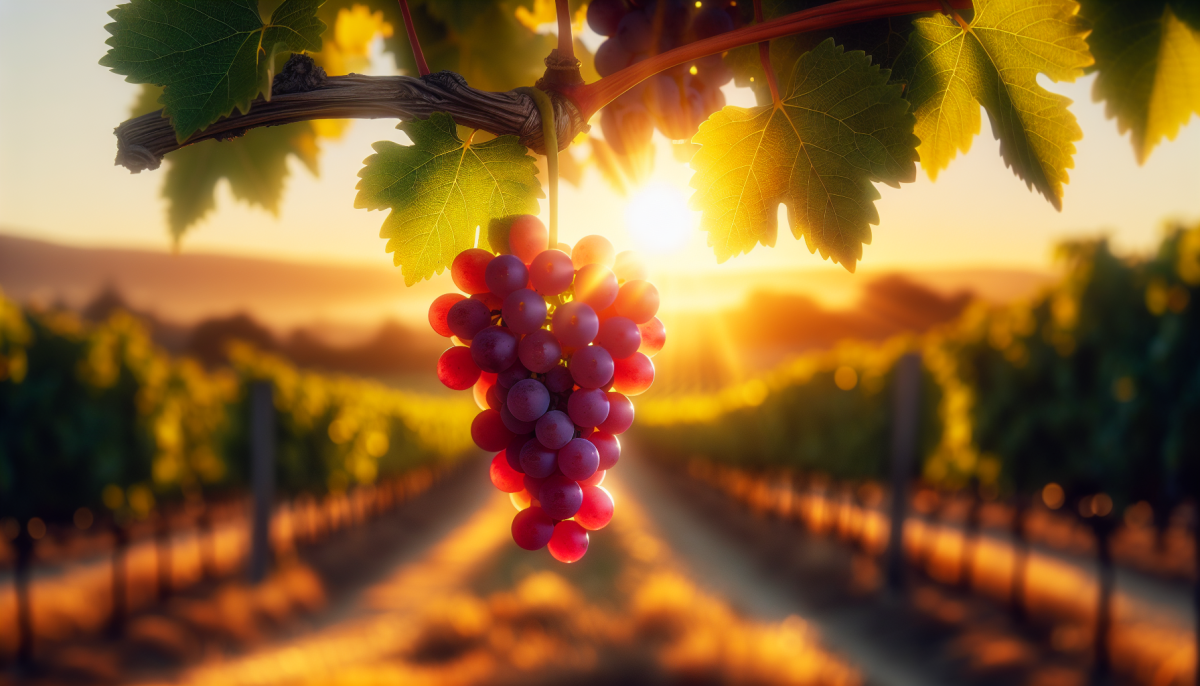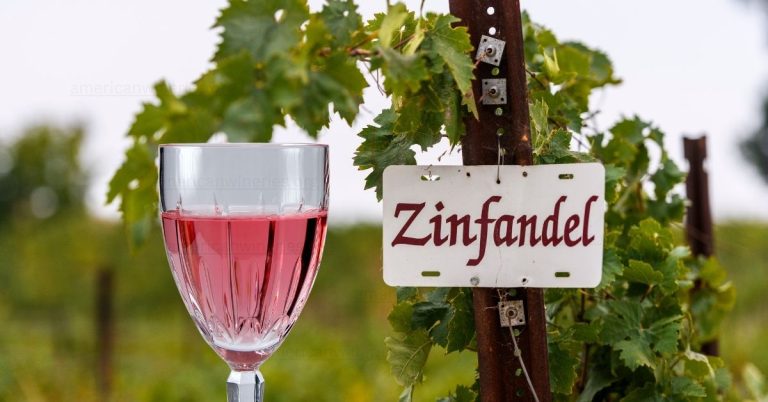If you have ever explored the world of American wineries or have a curiosity for the art of winemaking, then you are no stranger to the mighty presence of Zinfandel. With its rich history deeply rooted in the soils of America, this grape variety has established itself as a symbol of the nation’s winemaking heritage. Known for its bold personality, Zinfandel captivates wine enthusiasts with its robust flavors and vibrant character. In this article, we will take a closer look at the fascinating journey of Zinfandel, from its humble beginnings to its esteemed status in the world of wine. So sit back, pour yourself a glass of your favorite vintage, and join us as we unravel the essence of America’s very own heritage grape.
History of Zinfandel
Origin in Croatia
Zinfandel, known as Croatia’s “tribidrag” or “crljenak kaštelanski,” has a rich history that predates its arrival in the United States. The grape’s origins can be traced back to Croatia’s Dalmatian Coast, where it was cultivated by ancient winemakers. The Croatian name “tribidrag” refers to the grape’s tendency to produce three bunches of fruit per stem.
Arrival in the United States
Zinfandel made its way to the United States in the 19th century, specifically to California. In the early days, it faced a period of uncertainty, with its true origin and identity often debated. The grape’s versatility and ability to adapt to different growing conditions quickly made it popular among American winemakers.
California’s Role in Zinfandel’s History
California played a crucial role in shaping the history of Zinfandel. The state’s warm Mediterranean climate and diverse microclimates provided the ideal conditions for the grape to thrive. From the early settlers to the modern-day winemakers, California has embraced Zinfandel as a signature grape variety, showcasing its unique characteristics and flavors.
Characteristics of Zinfandel
Appearance
Zinfandel wines range in color from medium to deep red. They are known for their intense and vibrant hues, often leaning towards a dark purple shade. When poured into a glass, Zinfandel displays a rich and inviting color that hints at the bold flavors to come.
Aromas
One of the distinguishing characteristics of Zinfandel is its captivating aromas. The nose often reveals an array of ripe fruits, including blackberries, cherries, and raspberries. These fruity notes are complemented by subtle hints of spice, such as black pepper and cinnamon, adding complexity to the wine’s bouquet.
Flavors
Zinfandel is celebrated for its vibrant and robust flavors. The palate is dominated by luscious fruit flavors, with blackberries and dark cherries taking the spotlight. Some Zinfandels also exhibit a unique briary or brambly quality, adding an earthy component to the wine. Additionally, hints of vanilla, tobacco, and chocolate can be present in well-aged Zinfandel wines, resulting from oak aging.
Acidity and Tannins
Zinfandel wines typically possess a moderate to high level of acidity, providing a refreshing and lively sensation on the palate. The tannin levels in Zinfandel can vary depending on the winemaking style, but they generally fall within the medium to high range. These tannins contribute to the wine’s structure and ability to age gracefully.

Zinfandel Growing Regions
California
California is undeniably the most prominent and renowned Zinfandel growing region. Within the state, various subregions have gained recognition for their exceptional Zinfandel vineyards. The regions of Sonoma County, Napa Valley, and Paso Robles have long been acclaimed for producing top-quality Zinfandel wines.
Other Regions in the United States
While California leads the way in Zinfandel production, other regions within the United States have also embraced the grape. Oregon’s Rogue Valley, Washington’s Columbia Valley, and New York’s Finger Lakes region are among the places where Zinfandel vines have been successfully cultivated.
International Regions
Outside of the United States, Zinfandel has also found a home in certain international regions. Australia, specifically the Barossa Valley and McLaren Vale, has gained recognition for its Zinfandel production. Italy’s Puglia region, where the grape is known as Primitivo, has also made a notable mark on the Zinfandel map.
Popular Zinfandel Styles
Red Zinfandel
Red Zinfandel is the most well-known and widely consumed style of Zinfandel. It showcases the grape’s bold and fruit-forward characteristics, often with a higher alcohol content. Red Zinfandel wines can range from medium-bodied to full-bodied, with flavors that encompass a wide spectrum of fruits, spices, and earthy notes.
White Zinfandel
White Zinfandel is a unique expression of the grape that gained popularity in the United States during the 1970s. Contrary to its name, White Zinfandel is not a white wine, but rather a pink or blush wine. It is produced using a different winemaking technique that involves minimal skin contact, resulting in a lighter-bodied, slightly sweet, and refreshing wine.
Rosé Zinfandel
Rosé Zinfandel represents a middle ground between the red and white styles. This style of Zinfandel offers a vibrant pink hue and exhibits the fruity and spicy characteristics of the grape. Rosé Zinfandel is a versatile wine, often enjoyed as a refreshing summer sipper or paired with a wide range of cuisines.

Food Pairings with Zinfandel
Barbecue and Grilled Meats
Zinfandel’s bold flavors pair exceptionally well with smoky and grilled meats. Whether it’s a juicy steak, barbecued ribs, or a charred burger, Zinfandel’s fruitiness and moderate tannins complement the rich flavors and savory char of these dishes. The wine’s acidity also helps cut through the richness, creating a harmonious balance on the palate.
Braised and Stewed Meats
Zinfandel’s robust character makes it an ideal companion for braised and stewed meats. The wine’s intense flavors and structured tannins stand up well to the long cooking times and complex flavors found in dishes like beef stew, Osso Buco, or coq au vin. Zinfandel’s ability to enhance the richness and depth of these dishes makes it a go-to choice for meat lovers.
Spicy Foods
Zinfandel’s fruit-forward and spicy qualities make it an excellent choice for pairing with spicy foods. The wine’s ripe fruit flavors and moderate tannins help offset the heat and bring balance to dishes like spicy barbecue chicken, Thai curries, or Mexican enchiladas. Zinfandel’s ability to stand up to bold flavors and spice without overpowering the palate makes it a versatile partner for spicy cuisines.
Cheeses
Zinfandel’s versatility extends to cheese pairings as well. Its fruity characteristics and moderate tannins make it a natural fit for a wide range of cheeses. It complements creamy cheeses like Brie and Camembert, while also holding its own against aged cheddars and gouda. Zinfandel’s ability to enhance the flavors of both mild and robust cheeses makes it an excellent choice for cheese boards and wine-centric gatherings.
Zinfandel and Wine Aging
Zinfandel’s Aging Potential
Zinfandel’s aging potential can vary depending on the winemaking style and vineyard characteristics. Generally, red Zinfandel wines benefit from short to medium-term aging, typically around 5-10 years. During this time, Zinfandel can develop more complex flavors, soften its tannins, and integrate its aromas into a harmonious whole. However, certain high-quality Zinfandels from exceptional vintages can age gracefully for several decades, evolving into wines of great depth and nuance.
Oak Influence on Zinfandel
Oak plays a significant role in shaping the character of Zinfandel wines. Many producers choose to age their Zinfandels in oak barrels, which imparts additional flavors and texture to the wine. The use of oak can contribute notes of vanilla, spice, and toasty nuances, enhancing the wine’s complexity and adding layers of depth. The level of oak influence can vary, with some winemakers opting for more subtle oak expressions and others favoring a more pronounced style.
Cellaring and Serving Tips
To make the most of your Zinfandel, it’s crucial to store and serve it correctly. For short to medium-term aging, store your Zinfandel bottles in a cool and dark place, ideally with a consistent temperature of around 55-60°F (12-15°C). When serving, Zinfandel is best enjoyed slightly below room temperature, around 60-65°F (15-18°C). Decanting younger Zinfandels for 30 minutes to an hour can help them open up and reveal their full potential. However, older and more delicate Zinfandels may benefit from a gentler approach, requiring less aeration to preserve their nuanced qualities.
Zinfandel and American Wineries
Prominent American Wineries Producing Zinfandel
The American wine industry is home to numerous wineries that have made a significant impact on the production of Zinfandel. Notable names include Ridge Vineyards, Turley Wine Cellars, Seghesio Family Vineyards, and Ravenswood Winery. These wineries have dedicated themselves to crafting high-quality Zinfandels, showcasing the grape’s unique personality, and ensuring its continued recognition as America’s heritage grape.
Special Events and Festivals Celebrating Zinfandel
Zinfandel’s popularity has spurred the creation of special events and festivals dedicated to celebrating this beloved grape. One such event is the “Zinfandel Experience” in San Francisco, a multi-day extravaganza where enthusiasts can taste a wide range of Zinfandels from various producers. Other notable festivals include “ZinEx” in Seattle and the “Zinfest” in Lodi, California. These events offer wine lovers the opportunity to immerse themselves in Zinfandel’s diverse expressions and learn more about its cultural significance.
Zinfandel’s Influence on the American Wine Industry
Zinfandel’s Contribution to the American Wine Industry
Zinfandel holds a significant place in the history of the American wine industry. It has become one of the country’s most iconic and widely recognized grape varieties. Zinfandel’s adaptability and ability to thrive in California’s diverse climates have earned it a special status among American wine lovers. Through the years, Zinfandel has put American winemaking on the global map, contributing to the growth and prestige of the industry.
Impact on Winemaking Practices
Zinfandel’s bold personality and unique characteristics have influenced winemaking practices across the United States. Winemakers have learned to harness the grape’s full potential, experimenting with various fermentation techniques, oak aging regimens, and vineyard management strategies. Zinfandel’s influence can be observed in the increasing emphasis on fruit expression, balanced acidity, and judicious use of oak in American winemaking as a whole.
Controversies Surrounding Zinfandel
Zinfandel’s Alleged Croatian Origin Controversy
The grape’s exact origin has been a subject of controversy and debate for many years. While DNA analysis has confirmed Zinfandel’s connection to Croatia’s crljenak kaštelanski and Italy’s Primitivo, the specific path of its journey to the United States remains disputed. Some argue that the grape arrived in California directly from Croatia, while others speculate that it traveled through the United States East Coast from Europe. Despite ongoing debates, Zinfandel’s status as a true American heritage grape remains undisputed.
Mislabeling and Confusion with Primitivo
In the world of wine, there has been occasional confusion and mislabeling of wines made from Zinfandel and its Italian counterpart, Primitivo. Due to the genetic similarities between the two grapes, consumers and even industry professionals have occasionally mistaken one for the other. This misidentification has led to wines labeled as Zinfandel being made from Primitivo grapes, causing confusion in the market. However, industry efforts to improve labeling accuracy and promote transparency have helped mitigate this issue.
Future of Zinfandel
Exploration of New Growing Regions
As the popularity of Zinfandel continues to grow, winemakers are exploring new regions beyond California and the United States. Emerging wine regions such as South Africa, Chile, and Argentina have shown promise in cultivating Zinfandel vines. This expansion into new territories allows for a deeper understanding of Zinfandel’s adaptability to different climates and soil types.
Experimentation with Winemaking Techniques
Winemakers are constantly pushing the boundaries when it comes to vinification techniques for Zinfandel. From utilizing different fermentation methods to exploring various oak aging regimens, experimentation is key to unlocking the full potential of this versatile grape. With each vintage, winemakers strive to craft Zinfandel wines that express the unique terroir and personality of their vineyards.
Consumer Trends and Demand
Zinfandel continues to enjoy a strong following among wine enthusiasts, and its future looks bright. As consumer palates evolve and interest in unique and diverse wines grows, Zinfandel’s bold personality and captivating flavors are likely to appeal to a broad range of wine lovers. The increasing demand for artisanal, small-batch wines and the exploration of new flavor profiles bode well for Zinfandel’s continued relevance and popularity in the ever-changing world of wine.
In conclusion, Zinfandel’s history, characteristics, and influence on the American wine industry make it a true icon of American winemaking. From its uncertain origins to its diverse array of styles and food pairings, Zinfandel has cemented its place as a beloved grape variety. As new discoveries are made, new regions explored, and winemaking techniques refined, Zinfandel will undoubtedly continue to captivate wine lovers and contribute to the rich tapestry of the American wine industry for years to come.
© 2024 by American Wineries Reserved all rights. This document cannot be copied or communicated in any way without American Wineries’s prior written consent, whether it be electronically, mechanically, through photocopying, recording, or another medium.

Leave a Reply